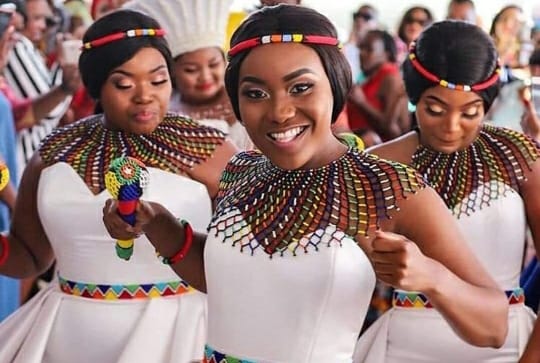Local fashion designers have it tough. The industry is a mixed bag filled with creatives who strive to produce original work, international fashion giants with huge budgets, and copycats whose focus is to produce good quality fakes. What does it take to stand out, scale and remain lucrative in such a competitive industry?
South African fashion designers have been successful in attracting the attention of local and international admirers through their integration of traditional and cultural aesthetics into fashionable clothing. They have transformed some of the age-old creations that define diverse ethnic identities into a unique attribute of local designs.
Inspired by her grandmother who was a crafter and an artist, Nonceba Gxalaba can be credited with commercialising traditional fashion items through her company Kuumba Africa. After studying for a National Diploma in Clothing and Design, Gxalaba completed a BTech in Clothing Production to enhance the skills she observed from her grandmother.
“My grandmother used to produce handmade mats and baskets using grass. That is where I learned the importance of using my hands to survive. My mother, on the other hand, used to knit jerseys and go to exhibitions to showcase them,” says Gxalaba.

“As a seven year old, I was already making clothes that could be worn instead of sewing for dolls (like girls my age would ordinarily do). At the age of 14, I started creating designs inspired by what I saw on the television.”
As the founder of Khuumba Africa, Gxalaba has turned her business into an important pillar of cultural aesthetics and the economy of her community.
Mpumalanga-based entrepreneur and founder of Hlumani Arts and Culture Projects, Rhirhi Mahlangu has enjoyed both local and international support for her arts and culture products which range from clothing items, to beadwork and decorative artwork.
Mahlangu was convinced that her business was on the right track in achieving some of the milestones she had set out when she received showcasing invitations from international exhibitions such as the AF-L’ Artigiano in Fiera International Crafts Selling Exhibition in Milano.
“I started selling beadwork to individuals, my artistic creations caught the attention of chiefs, the municipality, as well as the Department of Arts and Culture. The department gave me the support and opportunity I needed to showcase my work to different stakeholders and allowed me to grow my customer base,” says Mahlangu.

“My focus was to grow the business through creating new products and services once I got one foot into the market. I achieved this through getting training and marketing the business better,” she adds.
Small medium enterprises face numerous challenges in their business journey. Both these women-led businesses have been fortunate to identify and capture the opportunities that their businesses could monetise while creating employment for the locals.
The creative industry is a very unpredictable space and clothing design and production is no different. There is no set formula for success in this sector, every gain is reliant on how hard the business owner is working, as well as the timing behind the introduction of certain products. Every season brings new hurdles, pushing each business owner to remain agile in their approach to reaching their ideals.
“Seeing a bigger picture in my fashion dream made me strong even when the going got tough with the international players taking over our market, I remained positive and decided never to quit,” says Gxalaba.
“As much as we are creators of our lived experiences, I had a drive that kept telling me in my mind to never give up on my passion. Fashion design was my first love,” she adds.
Gxalaba’s clothing production business’ main product range includes school wear, tracksuits, protective clothing overalls and fashionable men’s and ladies’ wear.

Through Kuumba Africa, Gxalaba has been successful in changing the landscape of small business ownership in King Williams Town employing the locals while creating products that supply a local demand.
Hlumani Arts and Culture Projects has turned into an organisation that serves as a vehicle that upholds and documents the beautiful heritage inherent in the Isindebele culture under Mahlangu’s leadership. Her crafty creations have afforded her the opportunity to travel the world.
“Yes, there were difficulties along the way. I was never discouraged. However, I came to realise that I needed to put in more time and effort into the business and resources in order to carry on. Competition is always around to keep me on my toes,” says Mahlangu.
“My company is aimed at the economic empowerment of black people and contributing positively towards the economic growth of the country at large. We are passionate about developing skills in previously disadvantaged communities and create more jobs for women, youth and people with disabilities.”
Mahlangu’s clients range from admirers of the Isindebele tradition who use her creations for weddings, parties, traditional ceremonies, political functions, as well as buyers in the tourism practice. She has attracted the attention of corporate clients who incorporate her designs into advertising campaigns.
“It gives me a sense of pride and satisfaction to create personal designs that customers are proud of. It leaves a lasting legacy and a sense of achievement,” she concludes.



